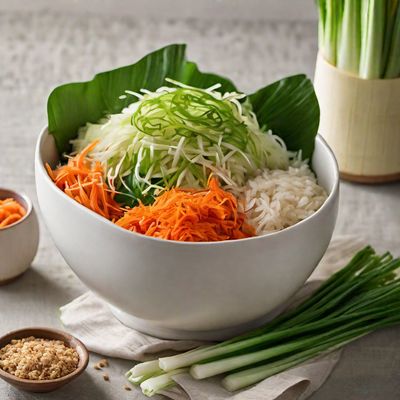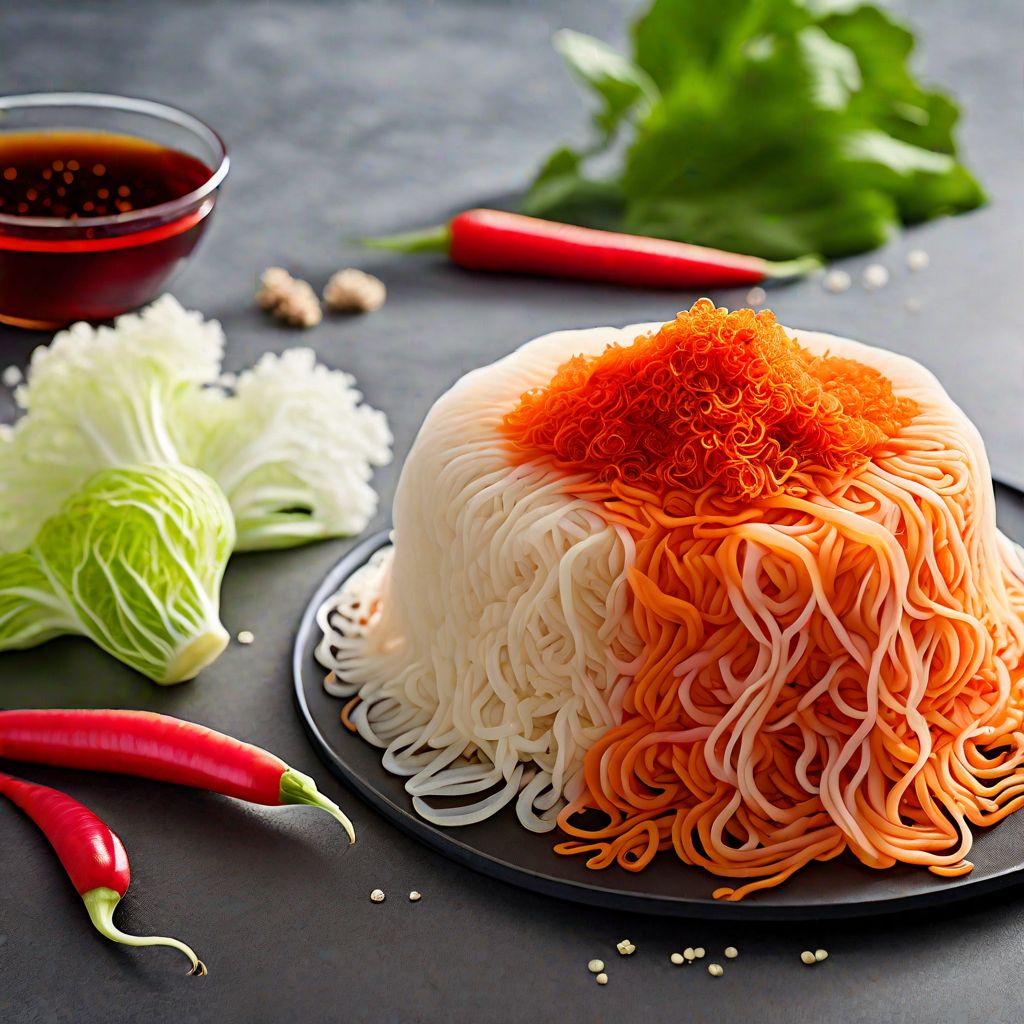
Recipe
Molecular Kimchi
Kimchi Reimagined: A Molecular Gastronomy Twist
4.8 out of 5
In the realm of molecular gastronomy, we bring you a unique take on the traditional Korean dish, Kimchi. By utilizing innovative techniques and ingredients, we transform this beloved classic into a visually stunning and flavor-packed creation. Get ready to embark on a culinary adventure that combines tradition with modernity.
Metadata
Preparation time
30 minutes
Cooking time
2 minutes
Total time
2 hours 32 minutes
Yields
4 servings
Preparation difficulty
Medium
Suitable for
Vegetarian, Vegan, Gluten-free, Dairy-free, Low calorie
Allergens
Fish (fish sauce)
Not suitable for
Nut-free, Soy-free, Shellfish-free, Egg-free, Paleo
Ingredients
While the essence of Kimchi remains intact, our molecular gastronomy adaptation introduces a playful twist to the dish. We incorporate scientific principles to create unexpected textures, enhance flavors, and present the dish in an avant-garde manner. Prepare to experience Kimchi like never before. We alse have the original recipe for Kimchi, so you can check it out.
-
500g (17.6 oz) Napa cabbage 500g (17.6 oz) Napa cabbage
-
50g (1.8 oz) Korean radish 50g (1.8 oz) Korean radish
-
30g (1 oz) coarse sea salt 30g (1 oz) coarse sea salt
-
30g (1 oz) sugar 30g (1 oz) sugar
-
30g (1 oz) ginger, grated 30g (1 oz) ginger, grated
-
4 cloves garlic, minced 4 cloves garlic, minced
-
2 tbsp Korean chili flakes 2 tbsp Korean chili flakes
-
2 tbsp fish sauce 2 tbsp fish sauce
-
1 tbsp soy sauce 1 tbsp soy sauce
-
1 tbsp rice vinegar 1 tbsp rice vinegar
-
1 tsp sesame oil 1 tsp sesame oil
-
1 tsp agar-agar powder 1 tsp agar-agar powder
-
500ml (2 cups) water 500ml (2 cups) water
Nutrition
- Calories (kcal / KJ): 85 kcal / 356 KJ
- Fat (total, saturated): 2g, 0g
- Carbohydrates (total, sugars): 15g, 8g
- Protein: 3g
- Fiber: 4g
- Salt: 2g
Preparation
-
1.Cut the Napa cabbage into bite-sized pieces and julienne the Korean radish.
-
2.In a large bowl, combine the cabbage, radish, sea salt, and sugar. Mix well and let it sit for 2 hours to allow the vegetables to release their moisture.
-
3.Rinse the cabbage and radish under cold water to remove excess salt. Squeeze out any remaining liquid.
-
4.In a separate bowl, combine the ginger, garlic, Korean chili flakes, fish sauce, soy sauce, rice vinegar, and sesame oil. Mix well to create the kimchi paste.
-
5.In a small saucepan, bring the water to a boil. Gradually whisk in the agar-agar powder and simmer for 2 minutes until fully dissolved.
-
6.Remove the saucepan from heat and let the agar-agar mixture cool slightly. Pour it into a squeeze bottle or pipette.
-
7.Arrange the cabbage and radish in a glass jar or individual serving dishes. Drizzle the agar-agar mixture over the vegetables, creating small droplets or spheres.
-
8.Allow the kimchi to set in the refrigerator for at least 2 hours before serving.
Treat your ingredients with care...
- Napa cabbage — Ensure the cabbage is fresh and crisp for the best texture in the final dish.
- Korean chili flakes — Adjust the amount according to your desired level of spiciness.
- Agar-agar powder — Follow the instructions on the packaging for the correct ratio of agar-agar to liquid.
Tips & Tricks
- Experiment with different vegetable combinations, such as adding shredded carrots or daikon radish for extra crunch and flavor.
- For a burst of umami, consider incorporating dried shiitake mushrooms into the kimchi paste.
- If you prefer a milder kimchi, reduce the amount of Korean chili flakes.
- Serve the Molecular Kimchi as a visually striking appetizer or as a unique accompaniment to main dishes.
- Feel free to play around with the presentation by using different serving vessels or garnishing with edible flowers.
Serving advice
Serve the Molecular Kimchi chilled to fully appreciate the unique textures and flavors. Pair it with a selection of other molecular gastronomy dishes for a memorable dining experience.
Presentation advice
Arrange the vibrant kimchi droplets or spheres on a white plate to showcase their colors. Garnish with fresh herbs or microgreens for an added touch of elegance.
More recipes...
For Kimchi » Browse all
For Korean cuisine » Browse all
More Korean cuisine dishes » Browse all
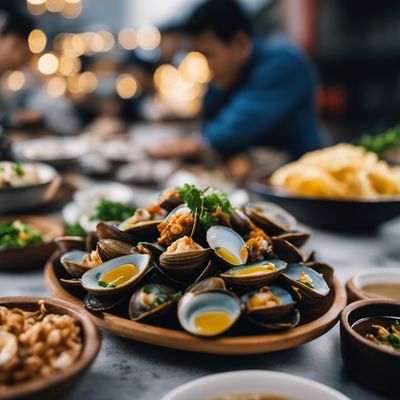
Nampo Petrol Clams
Nampo Petrol Clams is a Korean dish that is made with fresh clams and a variety of other ingredients. It is a flavorful and healthy dish that is...
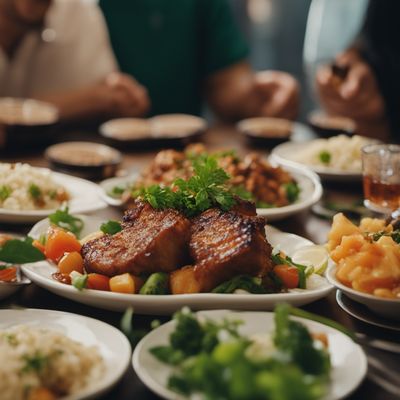
Galmaegisal
Galmaegisal (pork dish)
Galmaegisal is a Korean dish made with grilled pork skirt steak.
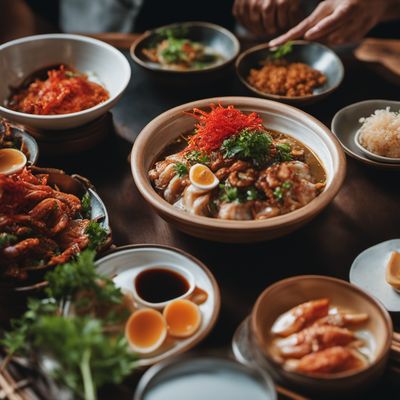
Gejang
Gejang is a traditional Korean dish that is made with raw crab marinated in soy sauce and other seasonings. It is typically served as an appetizer.


